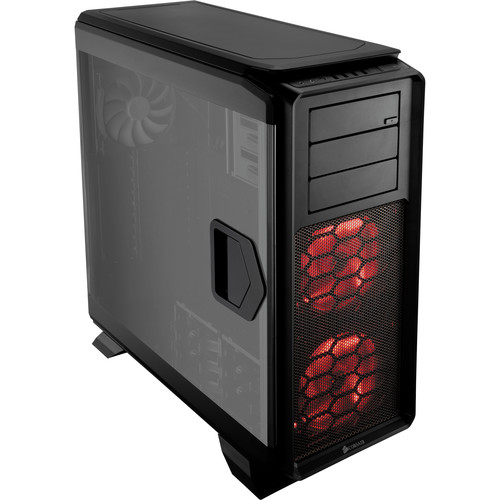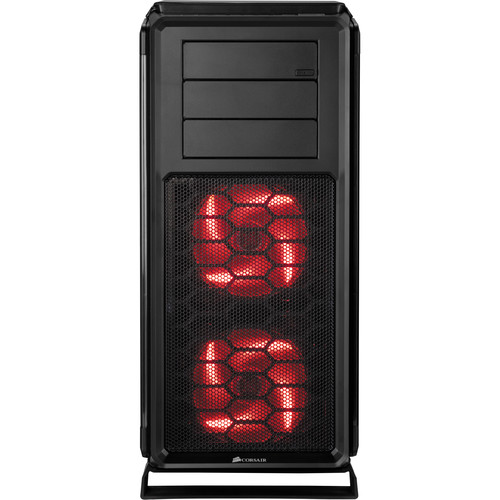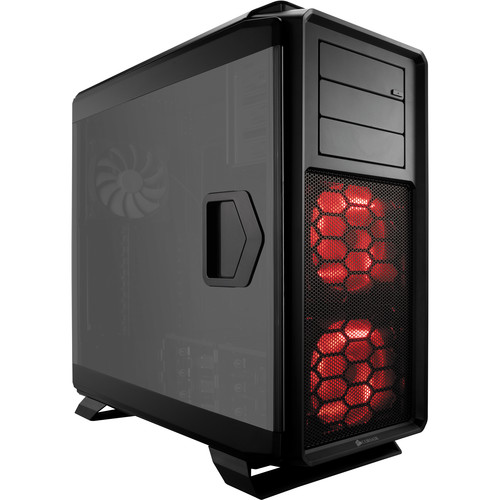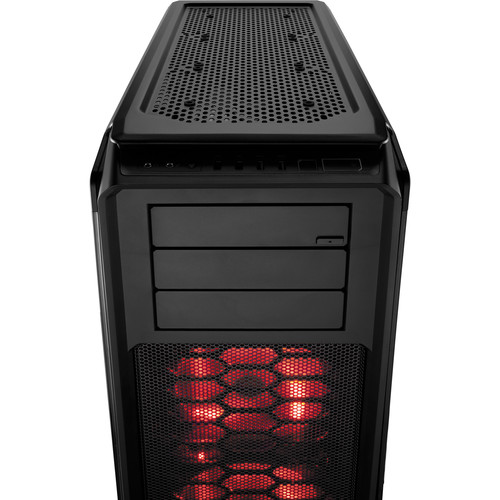UAE Shops - Established in 2002
عربى
GTX 1080 GAMING PC
Our GTX 1080 is in the building and I’m currently making my way through a series of benchmarks for this headline-hitting GPU. So far, things are looking good for the GTX 1080 although there have been some head-scratching results, which I will divulge in my full review. So far, the most interesting numbers have come from 4K tests, which cements my initial predictions that this GPU would be overkill for those just looking to play games in Full HD. Product Description GTX 1080 GAMING PC INTEL CORE-I7-6700K PROCESSOR ASUS MOTHERBOARD MAXIMUS VIII HERO RAM DDR4 16GB 3200MHZ CORSAIR / GSKIL / KINGSTON SEAGATE HDD 2TB SATA 7200RPM SAMSUNG SSD 500GB 850 EVO DVD R/W 24X SATA VGA CARD GTX 1080 8GB DDR5 POWER SUPPLY 850WATS 80 PLUS GOLD CPU COOLER H100 V2 HYDRO COOLING CASE CORSAIR WINDOWS 10 PROFESSIONAL 64 BIT OEM FREE CABLE MANAGEMENT WITH DELIVERY RED LED MOLDING FREE NVIDIA GEFORCE GTX 1080 – SPECIFICATIONS AND TECHNOLOGY EXPLAINED Computing Editor Michael Passingham explains everything you need to know about the GTX 1080 specs, pricing and release date. There are also new details on the slightly cheaper GTX 1070. Updated: Review in progress Our GTX 1080 is in the building and I’m currently making my way through a series of benchmarks for this headline-hitting GPU. So far, things are looking good for the GTX 1080 although there have been some head-scratching results, which I will divulge in my full review. So far, the most interesting numbers have come from 4K tests, which cements my initial predictions that this GPU would be overkill for those just looking to play games in Full HD. With very challenging modern games such as Shadow of Mordor, Hitman and Tomb Raider, the GTX 1080 performs between 40% and 60% better than the outgoing GTX 980, according to my benchmarks. However, because Full HD is so easy for all three GPUs, it’s the 4K results that are more important and so far I’ve found the GTX 1080 is between 20% and 25% faster than the GTX 980Ti and between 50% and 60% faster than the previous-generation GTX 980. I’ll have more details on the GPU’s other features in my full review, so stay tuned. Below is everything you need to know about the GTX 1080 and 1070. GTX 1080 ARCHITECTURE Nvidia’s 2016 cards are all powered by its new Pascal technology. Pascal replaces Maxwell, which was behind the GTX 900 Series and the Titan X. Nvidia’s headline claim about Pascal as a whole is that it’s three times more efficient than the previous generation, which is achieved via computing improvements and a new design and manufacturing process. Pascal uses a 16nm (nanometer) process, where Maxwell used a 28nm process. This means Nvidia can fit a greater number of transistors (the bits responsible for doing the work) into a smaller space while consuming less power, which results in a more efficient and cooler running GPU. In terms of clock speed the Nvidia GeForce GTX 1080 will sit at 1,607MHz, but is capable of boosting to 1,733MHz. This is a huge figure when you consider that the maximum boost speed of the GTX 980 was 1,216MHz. All this is possible in a GPU that consumes only 15W more power than the GTX 980 (180W versus 165W), and operates at a lower maximum temperature (94oC versus 98oC). Considering the GTX 1080’s greater efficiency, we’re likely to see the trend of using top-end Nvidia cards inside laptops to continue. image: http://static.trustedreviews.com/94/000038de0/251a_orh616w616/nvidia-geforce-gtx-1080-3.jpg Nvidia GeForce GTX 1080 3 At its event, Nvidia reportedly showed off the GTX 1080 overclocked to 2.1GHz. If this is doable in the real world, it could be an enthusiast’s dream. GTX 1080 MEMORY There’s a huge leap here, too. GDDR5 has been replaced by GDDR5X, a new memory technology that allows the GTX 1080’s 8GB of memory to perform more than a third quicker, with a bump in bandwidth from 7Gbps to 10Gbps. This is despite the memory’s actual width seeing no improvement over the old 980; it sticks firmly with a 256-bit bus. This leaves room for a GTX 1080 Ti in the future; the GTX 980 Ti offered a wider, 384-bit bus when it was released months after the GTX 980. The GTX 1070 will continue to use GDDR5. ASYNCHRONOUS COMPUTE This is a huge deal, and something many Nvidia fans were hopeful that the company would announce – they weren’t disappointed. Asynchronous compute is a rewrite of the way GPUs process graphics rendering and computing tasks, such as where objects are, and what effect on lighting it might have. image: http://static.trustedreviews.com/94/000038ddf/2316_orh616w616/nvidia-geforce-gtx-1080-2.jpg Nvidia GeForce GTX 1080 2 In non-asynchronous GPUs, graphics tasks and computing tasks are handled separately, meaning one has to wait for the other to finish. This is inefficient, and fails to take full advantage of a GPU’s power at any given moment, with many of the GPU’s cores sitting idle. Async Compute enables both tasks to run simultaneously (although not starting or finishing at exactly the same time), dramatically increasing efficiency. There’s still plenty of work to be done in this area, so it will be interesting to see how far Nvidia has come. It appears Nvidia’s current integration isn’t actually at a hardware level, but instead takes the form of “pre-emption”, which quickly allows the GPU to choose which tasks to handle at any one time; less important tasks are paused until higher priority ones have been completed. Related: The best gaming PC home builds priced and specified Async Compute is part of DirectX 12, the standard graphics API in Windows 10, and it’s something AMD has been doing very well for quite some time. Nvidia has also been using a form of async compute, but it’s significantly less effective than AMD’s integration. For its part, Nvidia plays down the importance of Async Compute, saying that few games in DirectX 12 actually support it. All well and good, but if Nvidia’s integration turns out to be disappointing, future Async Compute-enabled games will see a performance hit versus rival cards that can handle it. GEFORCE GTX 1080 VERSUS 980 AND TITAN X: SPECIFICATIONS image: http://static.trustedreviews.com/94/000038dfd/e933/gtx-1080-980-titan-x.png GTX 1080 980 Titan X GEFORCE GTX 1080 VERSUS 1070 AND 970 GTX 1080 versus 1070 and 970 With official information on the new GTX 1070 now available, we can see the boost in specification the new second-tier card has received over the previous-generation 970. There’s been a leap in the number of cores on the chip, up from 1664 to 1920, and clock speed has jumped up by a fair degree from 1050MHz up to 1506MHz, with a similarly big improvement in boost speed, too. To keep costs down, there’s no upgrade in terms of memory technology, but there’s now 8GB of GDDR5 instead of 4GB (or 3.5GB) in the previous generation. This leads to a modest increase in memory bandwidth thanks to the 256-bit memory bus. The clock speed bump and core count increase alone points to a big leap in performance, not even counting the benefits of using Pascal architecture over Maxwell in other tasks. It’ll be interesting to see how this one fares in the benchmarks. MORE POWERFUL THAN A TITAN X? Nvidia claims the GTX 1080 will be twice as fast when performing certain VR workloads when compared to the Titan X, a card costing more than £1,000 at launch. Now the dust has settled, and benchmarks scores are trickling in, it’s worth delving a little deeper into that Titan X performance claim. Nvidia’s main justifications for this are based on the addition of two new technologies, unique to Pascal, specifically for VR. The first technology is called Lens Matched Shading. Put simply, this spends less time shading pixels that will, ultimately, never be seen by the user. This is achieved by more accurately understanding the exact dimensions of a VR headset and then not bothering to calculate shading on objects that won’t ever be seen. This reduces overall load. The second is Single Pass Stereo. Previously, a GPU would have to render geometry (3D objects) twice: once for each screen on a VR headset. Single Pass Stereo negates that need, performing the necessary calculations to display an object on both screens in one pass. It is the combination of these two technologies that allow Nvidia to make such performance claims over the Titan X. It will be interesting to see how much of an effect it has in the real world. http://www.dubaigamers.net/shop/computers/gaming-editing-pc/gtx-1080-gaming-pc/






